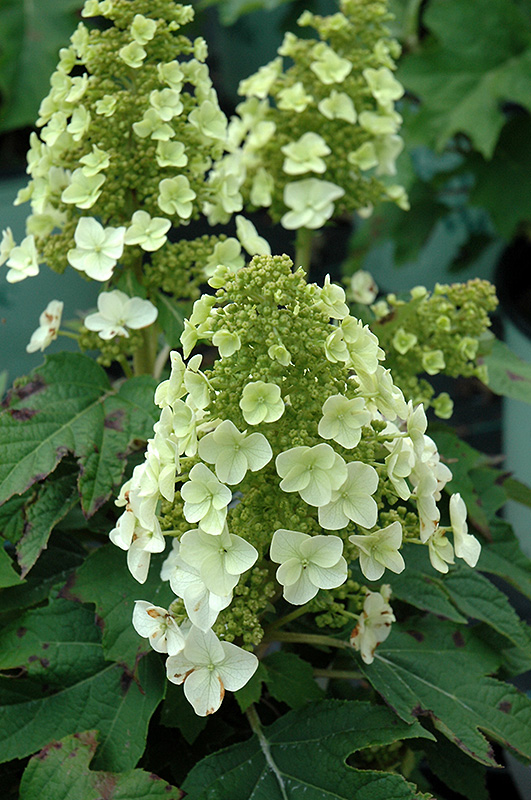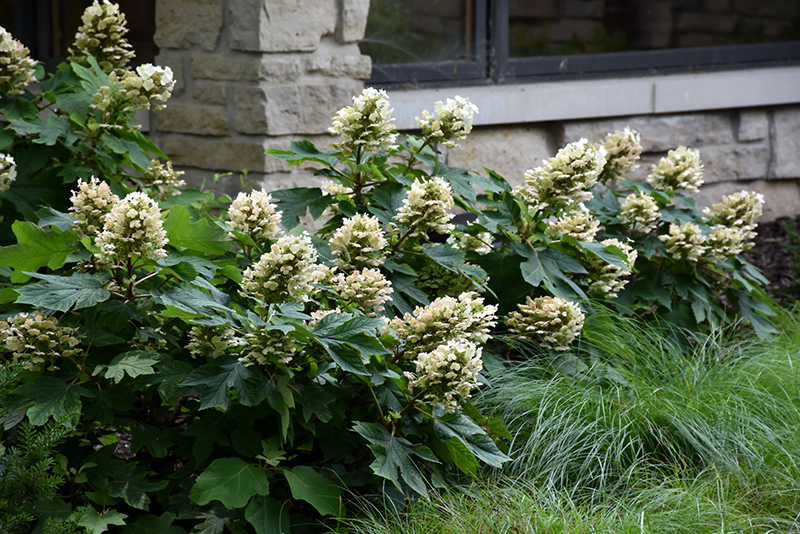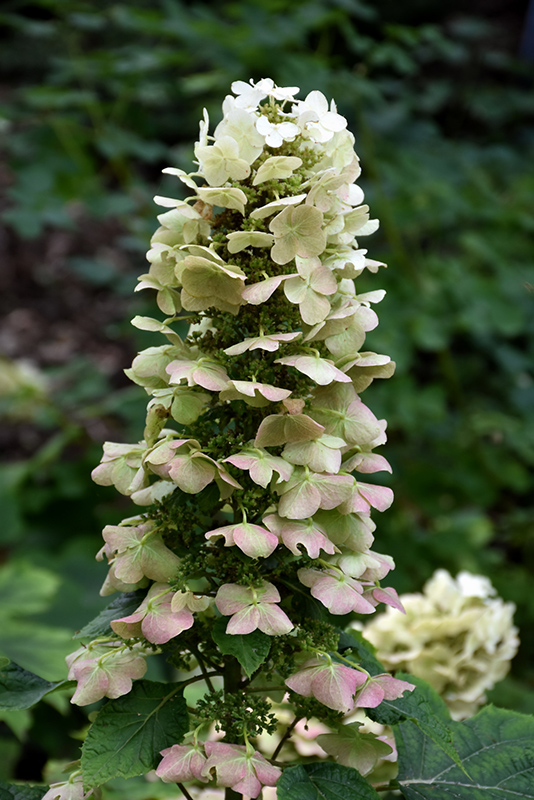Plant Search
Munchkin Hydrangea
Hydrangea quercifolia 'Munchkin'
Height: 24 inches
Spread: 3 feet
Sunlight:
![]()
![]()
![]()
Hardiness Zone: 5a
Other Names: Oakleaf Hydrangea
Description:
An excellent compact shrub featuring spikes of mixed sterile and fertile flowers which mature from pure white to pink, interesting foliage with spectacular burgundy red fall color, papery bark and dried flower heads provide winter interest
Growing Place Choice Plants
Our Growing Place Choice plants are chosen because they are strong performers year after year, staying attractive with less maintenance when planted in the right place.
Learn more about this promotion!
Ornamental Features
Munchkin Hydrangea features bold conical white flowers with pink overtones at the ends of the branches from early summer to early fall. The flowers are excellent for cutting. It has dark green deciduous foliage which emerges grayish green in spring. The large lobed leaves turn an outstanding brick red in the fall.
Landscape Attributes
Munchkin Hydrangea is a multi-stemmed deciduous shrub with an upright spreading habit of growth. Its strikingly bold and coarse texture can be very effective in a balanced landscape composition.
This shrub will require occasional maintenance and upkeep, and is best pruned in late winter once the threat of extreme cold has passed. It has no significant negative characteristics.
Munchkin Hydrangea is recommended for the following landscape applications;
- Accent
- Mass Planting
- General Garden Use
Planting & Growing
Munchkin Hydrangea will grow to be about 24 inches tall at maturity, with a spread of 3 feet. It tends to be a little leggy, with a typical clearance of 1 foot from the ground. It grows at a slow rate, and under ideal conditions can be expected to live for approximately 30 years.
This shrub performs well in both full sun and full shade. It prefers to grow in average to moist conditions, and shouldn't be allowed to dry out. It is not particular as to soil type or pH. It is somewhat tolerant of urban pollution, and will benefit from being planted in a relatively sheltered location. Consider applying a thick mulch around the root zone in winter to protect it in exposed locations or colder microclimates. This is a selection of a native North American species.
A NetPS Plant Finder tool




